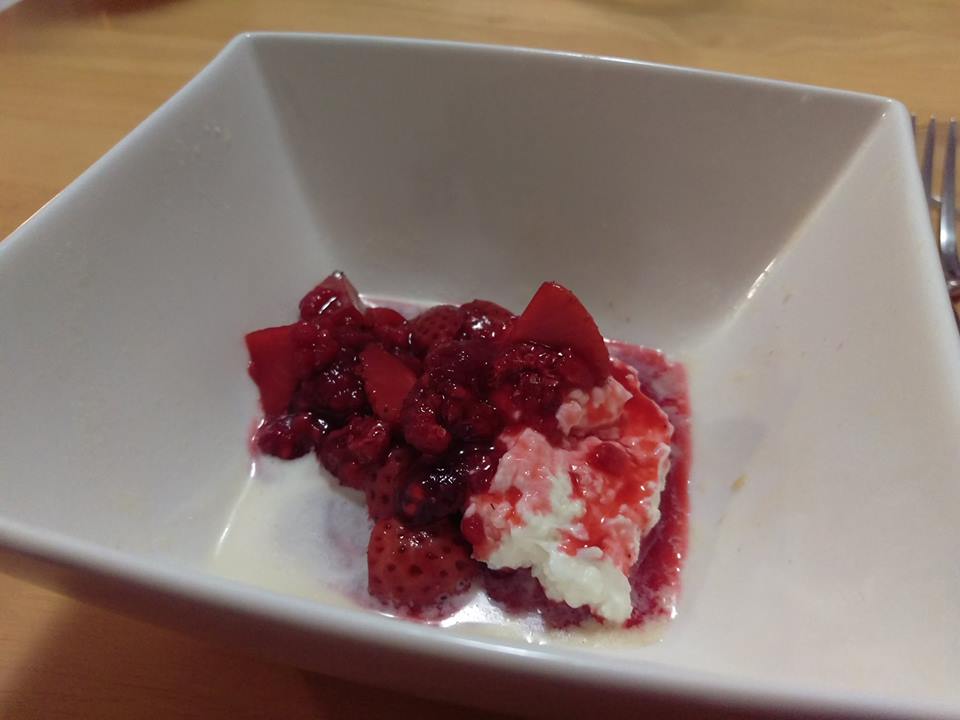This evening we’re off to a Viking-themed pot luck feast – the idea here is that everyone who goes takes a dish, and each dish forms one course of a massive degustation style dinner. We’ve been to a few of these dinners, each with a different theme, and they’re an enormous amount of fun. The food is always amazing, and so plentiful that we all waddle out at the end of the night swearing to be better about taking tiny portions of each dish next time.
The idea for this iteration is reasonably authentic Viking style food. So, being me, I went off to do some research. I came up with several ideas and recipes, including
- poached salmon (apparently the Vikings boiled their meat rather than braising, roasting or grilling it for the most part, and also ate a lot of fish),
- baked apples stuffed with honey and hazelnuts (all apparently authentic ingredients commonly available to and used by the Vikings),
- Viking style root vegetables in honey and butter (a mix of carrots, turnips, swedes, parsnips, beets, and cabbage, with the root vegetables par-boiled first, then the whole lot fried in a great deal of butter with honey drizzled over – apparently an authentic recipe from an old recipe book), and
- fresh curds with berries in honey (it seems that the Vikings didn’t view milk as something to consume fresh but rather as a raw ingredient used to make cultured milk drinks like skyr, yoghurt, curds and fresh cheeses, and aged cheeses – and all these products were eaten frequently by most people. Berries were widely available in the summer, and honey was also commonly used).
After much indecision, we’re taking curds and berries (aka deconstructed cheesecake), as well as some home-brewed mead. I thought I’d share the recipes, in case anyone else felt like experiencing some Viking treats.
 Fresh curds, served with honey and summer berries
Fresh curds, served with honey and summer berries
Topping
- 500g berries (we used raspberries and strawberries, but you can use any combination of raspberries, strawberries, blackberries, boysenberries, currants, etc.)
- 1/2 cup honey, warmed until it’s liquid enough to pour
- 1/2 cup fruit liqueur (we used home-made, gin-based strawberry and apricot liqueur, but you can use any clear liqueur flavoured with berries or stone fruit, or just use vodka or gin)
Make the topping: Combine the berries, honey, and alcohol. Stir well, and leave to steep for at least 3 hours. If possible, allow to steep overnight.
Note: We used a home-made strawberry liqueur, made by infusing sliced fresh strawberries in a 50/50 combination of gin and apricot schnapps for a month. We then used the alcohol soaked strawberries in the topping, along with half a kg of frozen raspberries.
Curds
- 700 ml full cream milk
- 50 ml apple cider vinegar
- 1 kg fresh yoghurt (we used a combination of sheeps milk and goats milk yoghurt, but any will do)
- 1 – 3 Tbsps sugar or honey, or to taste (honey is more authentic)
- 1/4 tsp salt
Make some fresh ricotta cheese: Heat the milk just to boiling point, until it starts to form bubbles. Stir in the vinegar, which will cause the milk to curdle. Line a colander or sieve with a clean tea towel or with cheesecloth, place over a bowl (or the sink if you don’t have a use for the whey), and pour the curdled milk into the lined colander. Leave to drain for 5 minutes.
Make the curds: Combine the yoghurt, sugar, salt, and the drained ricotta in a bowl. Pour the whole lot into the lined colander, and allow to drain for at least 3 hours, or as long as overnight, until it reaches your desired consistency. You may have to empty out the whey from the bowl under the colander a few times as the curds drain.
Serve the curds topped with the berry mixture. Scatter with chopped hazelnuts if desired.
Apple Melomel
- Combine 2 Tbs honey with 1 cup water. Boil hard for 2 minutes, then cool to room temperature.
- Hydrate your chosen yeast (champagne yeast, cider yeast, or a specific mead yeast are best; we used baking yeast for this experiment because it’s what we had) in the room temperature honey-water.
- Combine: 1 L honey (about 1.5 kg), 1 L fresh apple juice, and 3 L water. Bring to a boil, and skim off the scum and foam which rise to the surface.
- Add 1/4 cup organic raisins, and simmer gently until the raisins are hydrated and soft.
- Mash the raisins to release the juices.
- Allow the mixture to cool to room temperature, then strain into a fermentation vessel. Add the hydrated yeast.
- Ferment. The mead we take with us tonight will only have been fermenting for 2 days, but we’ll leave some to continue fermenting until it’s done, and then age it for a couple’ve months to see what we get.
The curds worked really well, and the topping was equally amazing. Much appreciation from everyone. The mead was also actually really lovely, even though it had only been fermenting for 2 days, and the flavours of the apple and honey came through really well.
The other dishes brought for the feast included: barley & vegetable soup with rye & oat bread, lamb skause (a meat and vegetable soup similar to cassoulet), roast pork with spiced apples, smoked mackerel with braised fennel, roast leg of lamb with honey roasted carrots, baked apples, and a cheese tart (which was savoury rather than sweet, made primarily of brie, cream, and butter, and tasting a bit like a very rich quiche). All were delicious. I particularly liked the braised fennel, and the skause.